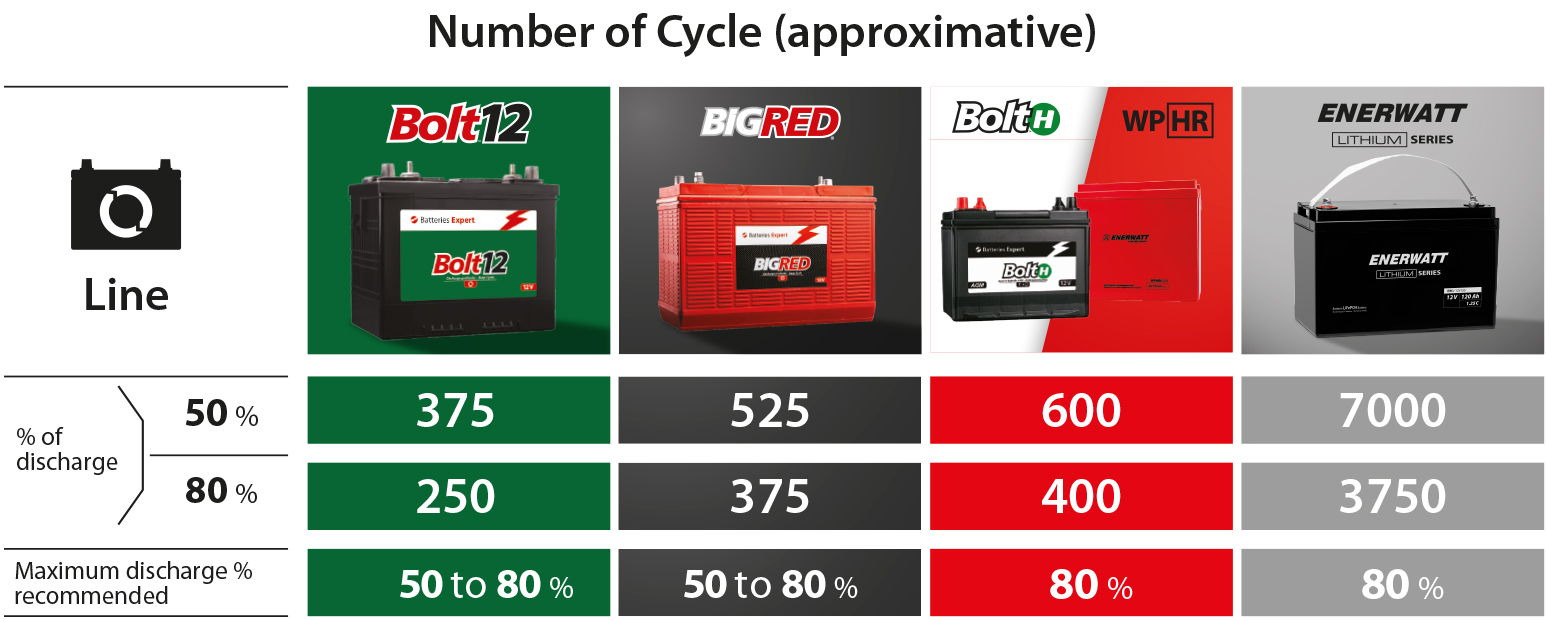Among the different types of batteries, there is the deep discharge battery, also known as the "marine battery." This battery is often compared to a car battery due to its format, but its use is not the same!
- The deep discharge battery is designed to deliver its power over a long period of time, to power lights and other 12-volt equipment for several hours. It provides a certain number of amps per hour.
- A car battery can provide nearly all of its power at once to spin a starter at full speed, then be recharged by the alternator. This battery can be quickly drained if a constant current is drawn from it. (For example: A forgotten light).
"You can discharge it completely, that's what it's for! ... Uh, not really!"
The term "deep discharge" can mislead people. Often, it's thought that it's a battery that can be completely and deeply discharged. But in fact, it's the "reserve amperage" that is deep and has more autonomy. This type of battery can be seriously damaged if completely discharged.
The "Cycle" of Life
Each battery has life cycles; one cycle is equal to a complete discharge and recharge. Thus, each full discharge prematurely reduces the battery's lifespan, as it loses one life cycle each time. (For example, a battery may have 500 cycles.)
To keep your battery healthy for several years, we recommend using about 50% (12.28V) of its capacity and recharging it with an appropriate charger. This will save battery cycles, extend the battery life, and make recharging easier (A battery that is too discharged has difficulty taking a charge).











